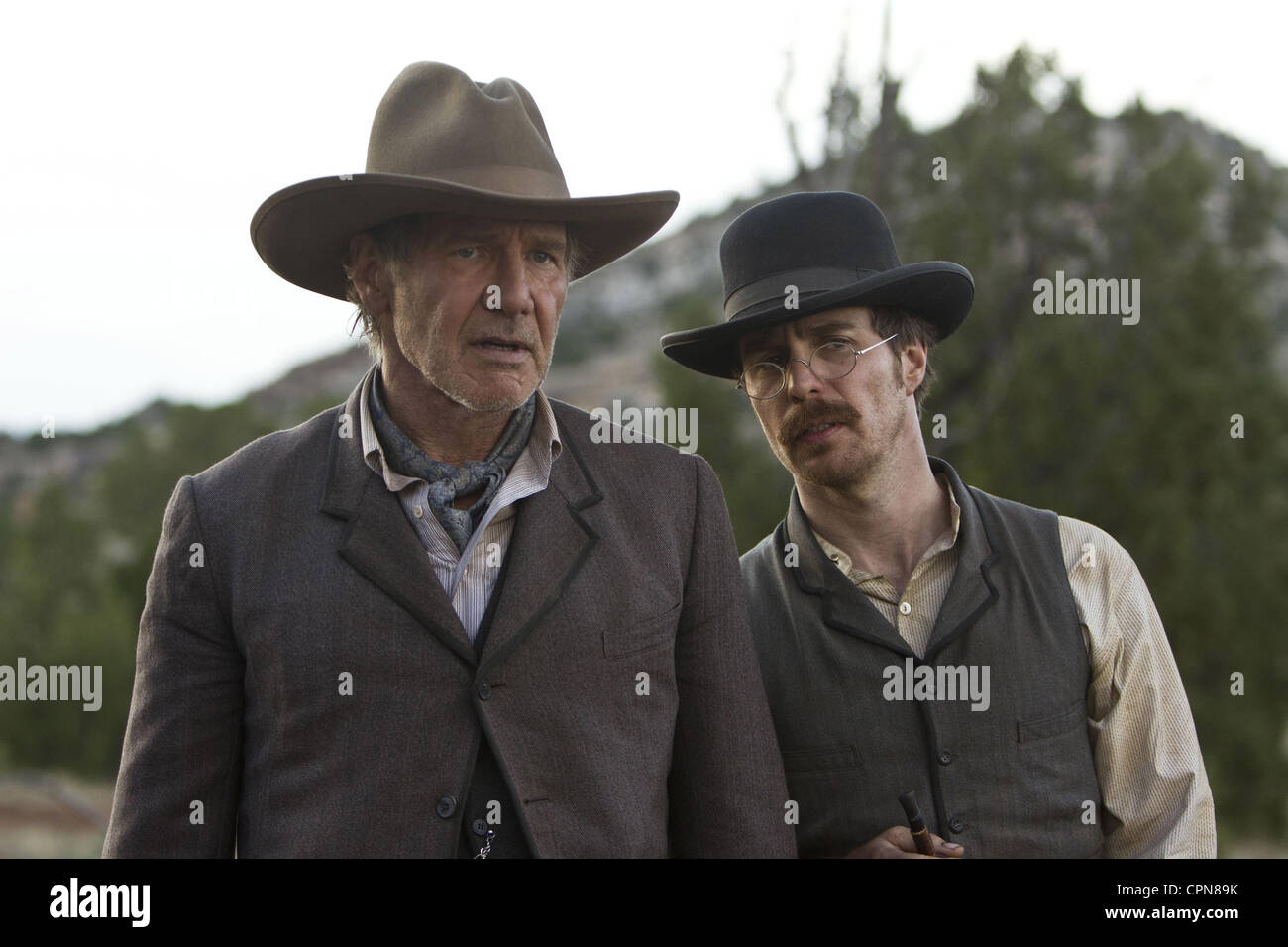

But they're soon to be confronted by an equally familiar but altogether less varied collection of hideous, malevolent, HR Giger-inspired aliens, dripping goo from every orifice, jumping around like monkeys and flying small spacecraft from which they use lines and hooks to scoop up their victims like aerial fishermen. They're familiar characters with a lot of mileage left in them. If you'd been called away at this point you'd have thought you'd missed a masterpiece, and it continues well, as Jake comes to a nearby town where he encounters a philosophical preacher, a naive saloon owner, an intrepid sheriff and the spoilt, wilful son of a rich rancher. Within seconds they're dead and their would-be victim, who has yet to utter a word, has a gun, a hat, a horse, but no identity. They're bounty hunters and they've picked the wrong strong, silent man. Suddenly three bearded desperadoes turn up on horseback, asking the way to the resonantly named town of Absolution. An amnesiac, later identified asJake Lonergan (Daniel Craig), recovers consciousness in the wilderness, horseless, a photo of a woman half-buried in the sand before him and a curious manacle or bracelet on his left arm, which, given the movie's title, suggests extraterrestrial origins. The best part of Cowboys & Aliens is the first 30 minutes or so, and the best of those is the pre-credit sequence. Both are ways of teaching lessons to the present by rewriting the past or projecting current tendencies into the future.
Cowboys and aliens free#
Sci-fi, on the other hand, is able to create a new consciousness involving the free play of intellect in a self-defining milieu of infinite pliability. The western is earthbound and circumscribed, its province the simpler, traditional moral concerns of man. Some, of course, think that in their purest forms the western and science fiction are at once complementary and antithetical. Science fiction has usually engaged with the western by transposing familiar plots from the old frontier of the west to the new frontier of space, as in the reworking of High Noon as Outland, with Sean Connery as an isolated sheriff on a grim planet, and The Magnificent Seven exchanging their horses for spacecraft in Battle Beyond the Stars, where Robert Vaughn reprises his earlier role. More recently, in Grim Prairie Tales (1990), Brad Dourif and James Earl Jones played two wayfarers who, wary of being murdered by each other should they sleep, keep themselves awake all night at a campfire by telling hair-raising supernatural stories involving Native Americans and settlers. The veteran B-movie specialist William Beaudine (in his day, Hollywood's oldest working director) brought gothic horror to the horse opera in the form of Billy the Kid vs Dracula and Jesse James Meets Frankenstein's Daughter, both made in 1966, while the celebrated special-effects expert Ray Harryhausen worked on The Valley of Gwangi, in which cowboys accompanied Edwardian scientists on a search for prehistoric monsters in Mexico.

The now moribund western has been an infinitely receptive genre, capable of turning The Iliad into a Texas range war and The Tempest into a tale of marooned outlaws, and of accommodating almost anything that's in the air, from ecology to juvenile delinquency.
Cowboys and aliens movie#
The western is self-evidently the host genre, but the movie might well have linked several familiar franchises by calling itself James Bond and Indiana Jones vs the Alien Predators. They play a couple of gun-toting hardmen in post-civil war New Mexico territory, the stamping ground of Billy the Kid and Pat Garrett, who have somewhat alarmingly close encounters of the third kind with extraterrestrials. Among the dozen or so listed producers are a pair of directors – Steven Spielberg, who has been behind a string of sci-fi movies, and Ron Howard, who has made two ambitious westerns, one rather good, the other a distinct failure.īased (not surprisingly) on a graphic novel, the picture stars Daniel Craig, a stranger both to the west and to sci-fi, and Harrison Ford, who made his name in the Star Wars movies but came a cropper with his only big-screen western. I n all the advertising for Jon Favreau's blockbuster Cowboys & Aliens, the latter element of the provocative title is presented in larger type, thus suggesting the current ascendancy of one genre over the other.


 0 kommentar(er)
0 kommentar(er)
